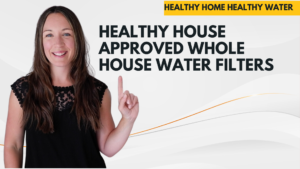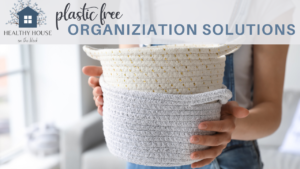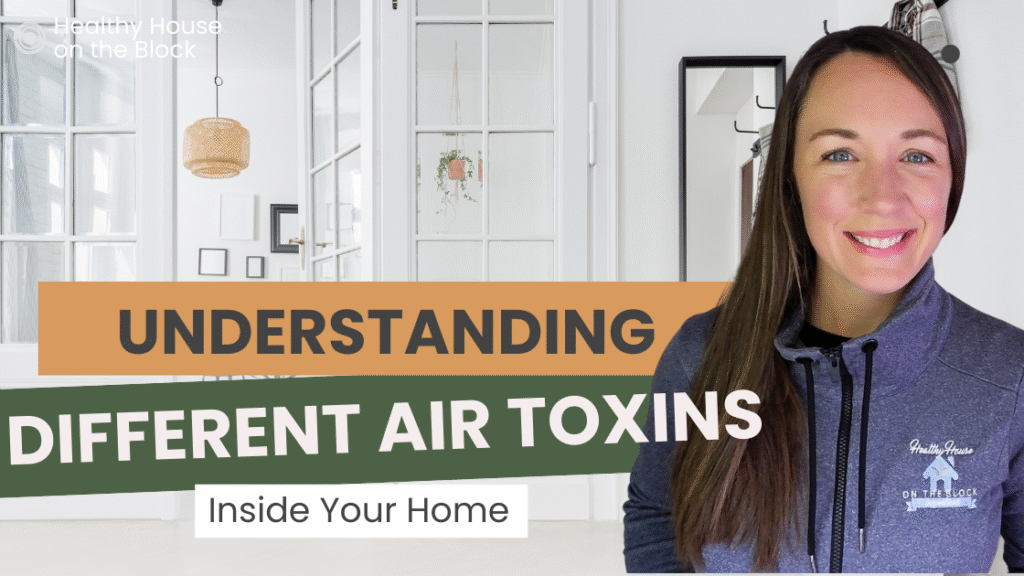
Let’s have an honest conversation about what you’re breathing right now. Yes, right now, as you’re reading this.
If you’re like most of my clients, you’ve probably heard of VOCs. Maybe you’ve even looked for “low-VOC” paint the last time you refreshed your living room. But here’s what I’ve discovered after years of helping families create truly healthy homes: there’s so much more to indoor air quality than just VOCs, and what you don’t know really could be affecting your family’s health.
I want to guide you through understanding three major categories of airborne toxins that might be circulating in your home as we speak: VOCs, TACs, and HAPs. Don’t worry if these acronyms sound intimidating—I’m going to break them down in a way that makes sense and, more importantly, give you practical steps to reduce them starting today.
VOCs: The Silent Companions in Your Daily Life
If you’re asking, “what are VOCs,” here is what you need to know. VOCs (Volatile Organic Compounds) are probably the most familiar of the three, but they’re often misunderstood. Here’s what you need to know: these are carbon-based chemicals that easily become gases at normal room temperature. That “new car smell” or the scent of fresh paint? Those are VOCs you’re inhaling.
What makes VOCs particularly concerning is that they’re absolutely everywhere in the modern home. When I conduct healthy home assessments, I often find elevated VOC levels coming from:
- That gorgeous accent wall you painted last month
- The conventional cleaning products under your kitchen sink
- The “mountain fresh” plug-in air freshener in your bathroom
- Your new memory foam mattress or sofa
- The pressed-wood furniture in your child’s bedroom
- Even that nail polish you applied this morning
Here’s something that might surprise you: VOC levels are typically 2-5 times higher inside your home than outside, even if you live in an urban area. And after certain activities like painting or using cleaning products? Those levels can spike to 1,000 times outdoor levels.
When I explain this to clients, their first question is usually, “But how are these affecting my family?” The answer isn’t comforting, but it’s important to understand:
In the short term, you might experience headaches, dizziness, throat irritation, or fatigue—symptoms many people mistakenly attribute to allergies or stress. But long-term exposure is where the real concern lies: liver and kidney damage, central nervous system problems, and for some VOCs like formaldehyde and benzene, an increased risk of cancer.
A groundbreaking 2022 study published in Environmental Health Perspectives confirmed what Building Biologists have been warning about for years: chronic exposure to common indoor VOCs significantly raises the risk of respiratory illness—especially in children whose developing lungs are more vulnerable.
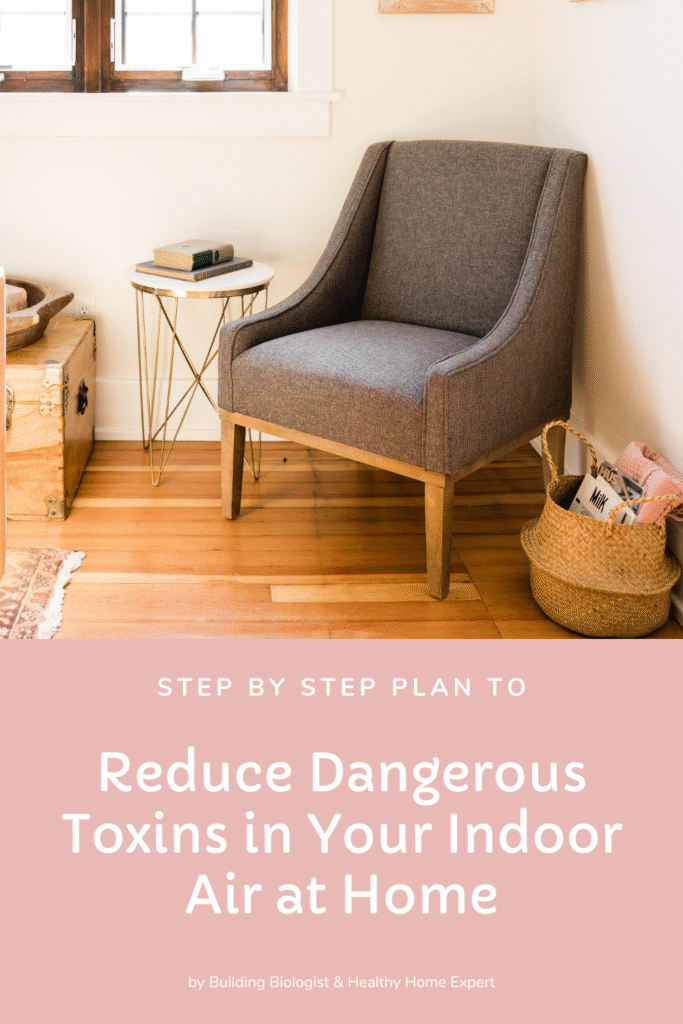
Now for the good news. Here’s what you can do today to start reducing VOCs in your home:
- When purchasing new furniture, look for solid wood rather than pressed wood or particleboard (which is essentially sawdust held together with formaldehyde-based glue)
- Choose truly zero-VOC paints and finishes (not just “low-VOC”—there’s a big difference)
- Replace conventional cleaning products with plant-based alternatives or simple solutions like vinegar, baking soda, and castile soap
- Ditch synthetic air fresheners entirely—open windows or use essential oil diffusers instead
- Let new furniture “off-gas” in your garage or outdoor space before bringing it inside
TACs: The Outdoor Pollutants That Come Inside
Next, let’s talk about TACs (Toxic Air Contaminants). Think of these as the troublemakers that often originate outdoors but find their way into your home—where they can build up to concerning levels.
TACs include substances like benzene from vehicle exhaust, formaldehyde from industrial emissions, and certain pesticides. In California and some other states, they’re officially defined and regulated as harmful air toxins, but that regulation rarely extends to indoor air—which is where you actually spend about 90% of your time.
I see this problem frequently when working with families who live near busy roads or industrial areas. They assume that closing their windows keeps them safe from outdoor pollution, but in reality, these toxins find ways in through:
- Tiny gaps around windows and doors
- Air intake vents
- On your clothing and shoes
- Through open windows and doors
Once inside, TACs can linger much longer than outdoors, where sunlight and air movement would help break them down.
Your exposure to TACs increases significantly when you:
- Burn candles or incense inside (especially conventional, scented varieties)
- Use your gas stove without proper ventilation
- Allow smoking near your home
- Apply conventional pesticides in or around your living space
The health effects of TACs are particularly concerning because they’ve been clearly linked to serious conditions like:
- Various types of cancer
- Cardiovascular damage
- Respiratory diseases including asthma and COPD
- Developmental delays in children
- Disruption of the endocrine (hormone) system
One client I worked with was experiencing persistent respiratory issues despite having no history of asthma. When we tested her home, we discovered elevated TAC levels coming from her attached garage where car exhaust was seeping into the living space. Simply sealing the door between the garage and house and installing a carbon air purifier significantly improved her symptoms within weeks.
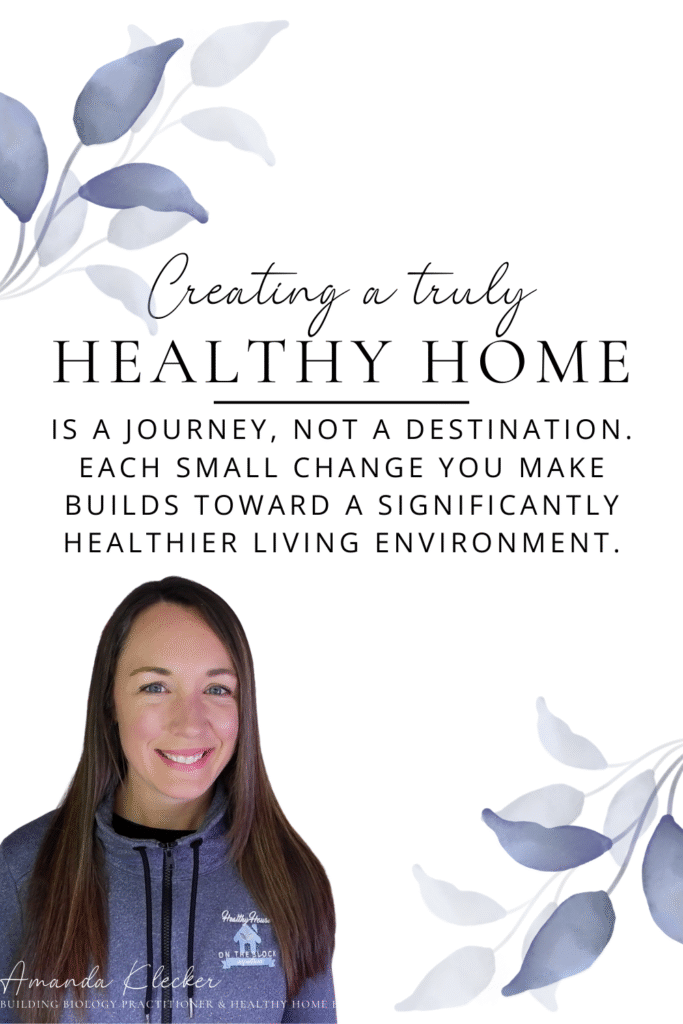
To reduce TACs in your home, I recommend these targeted approaches:
- Use a high-quality air purifier with both HEPA and activated carbon filters
- Ensure proper sealing around windows and doors to prevent outdoor pollutants from entering
- Run exhaust fans while cooking (especially with gas appliances)
- Take off shoes at the door to avoid tracking in outdoor pollutants
- Consider a home air quality monitor that can detect harmful compounds
HAPs: The Federally Recognized Dangers
The third category we need to discuss is HAPs (Hazardous Air Pollutants). The EPA has identified 187 specific pollutants as HAPs—chemicals known or suspected to cause cancer, reproductive harm, birth defects, and serious health complications.
What makes HAPs particularly concerning is that unlike some pollutants that cause immediate irritation or smell, many HAPs have no detectable odor and produce no immediate symptoms. You could be exposed for years without realizing it, while damage accumulates in your body.
In my practice, I find HAPs most commonly enter homes through:
- Residue on dry-cleaned clothing (tetrachloroethylene)
- Aerosol products and synthetic fragrances (various solvents)
- Paint strippers and degreasers (methylene chloride)
- Pressed wood products (formaldehyde)
- Infiltration from nearby industrial emissions
Let me share a personal example that might resonate with you. Years ago, before I understood the impact of these chemicals, I would bring dry-cleaned clothes directly into my bedroom closet. I didn’t realize that the chemical used in dry cleaning—tetrachloroethylene—was slowly off-gassing into my bedroom air. My sleep quality suffered, and I experienced mysterious headaches until I learned to let these clothes air out completely before bringing them inside.
The Agency for Toxic Substances and Disease Registry has found that even low levels of long-term HAP exposure can result in subtle but serious health effects, including:
- Damage to the developing nervous system
- Reproductive and fertility problems
- Increased cancer risk
- Liver and kidney toxicity
- Immune system suppression
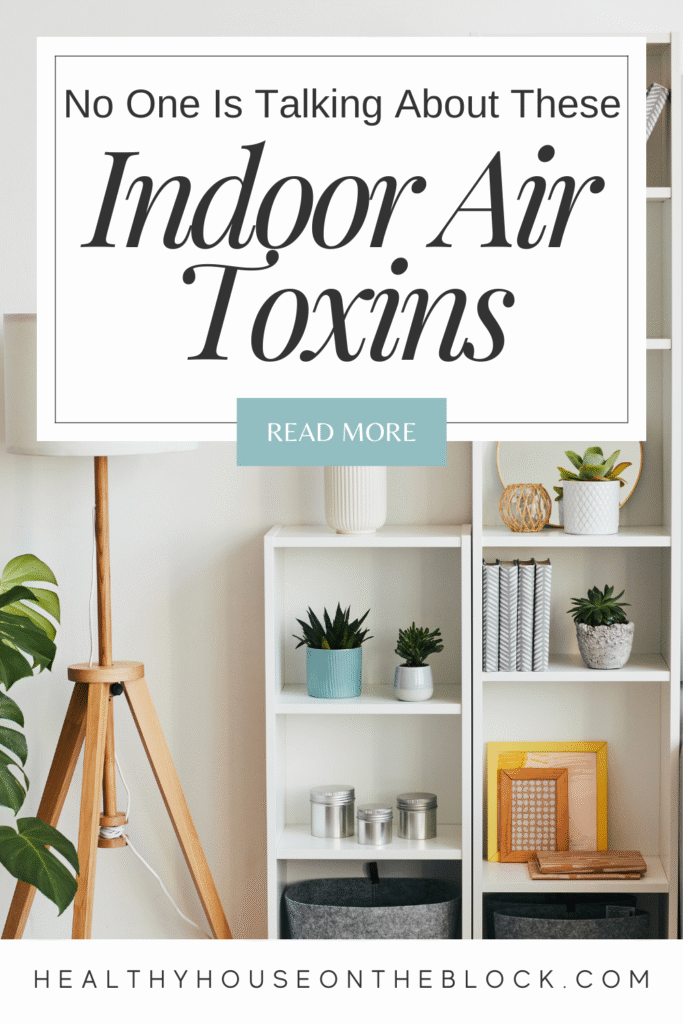
To protect yourself and your family from HAPs:
- Choose water-based or natural products over solvent-based ones whenever possible
- Allow dry-cleaned clothes to air out completely outside or in a well-ventilated garage before bringing them inside
- Avoid aerosol products—opt for pump sprays if needed
- Look for products specifically labeled as “HAP-free” for paints and finishes
- Be extremely cautious with any product labeled as a stripper, solvent, or degreaser
How These Pollutants Overlap and What That Means for You
Now that I’ve explained each category, you might be wondering how they relate to each other. Here’s a simple way to think about it:
- Some chemicals qualify as both VOCs and HAPs (like formaldehyde)
- Many TACs are also classified as HAPs
- Not all VOCs are HAPs or TACs, but many are
- All three categories contain substances that can harm your health
What matters most isn’t memorizing which chemical falls into which category—it’s understanding that these substances are likely present in your home right now, and taking consistent steps to reduce them.
The good news? Many of the solutions overlap. For example:
Improving ventilation helps reduce all three types of pollutants. This could be as simple as opening windows daily for 5-10 minutes (even in winter) or installing a mechanical ventilation system if you live in an area with poor outdoor air quality.
Using natural, plant-based cleaning products addresses multiple categories at once. When you swap out conventional cleaners for simple ingredients like vinegar, baking soda, and pure essential oils, you’re eliminating sources of VOCs, potential TACs, and several common HAPs in one move.
Air purification is your friend. A high-quality air purifier with both HEPA filtration (for particulate matter) and substantial activated carbon (for gaseous pollutants) can significantly reduce all three categories of airborne toxins.

Why This Matters More Than You Might Think
I want to share something that has become increasingly clear in my years of working with clients on healthy home transformations: the quality of your indoor air affects virtually every aspect of your health.
When you breathe in these chemicals day after day, year after year, your body’s detoxification systems can become overwhelmed. This doesn’t typically cause dramatic, immediate symptoms—instead, it creates what functional medicine practitioners call “total body burden.”
Think of it like a bucket that slowly fills with each exposure. Eventually, that bucket overflows, manifesting as:
- Unexplained fatigue
- Brain fog and difficulty concentrating
- Increased allergic reactions
- Headaches or migraines
- Skin issues
- Disrupted sleep
- Hormonal imbalances
- Compromised immunity
I’ve seen clients experience remarkable improvements in these symptoms once they address their indoor air quality. One mother I worked with had a child with persistent eczema that wouldn’t respond to any treatments. After we identified and removed several sources of VOCs and HAPs from their home, her daughter’s skin began clearing within weeks.
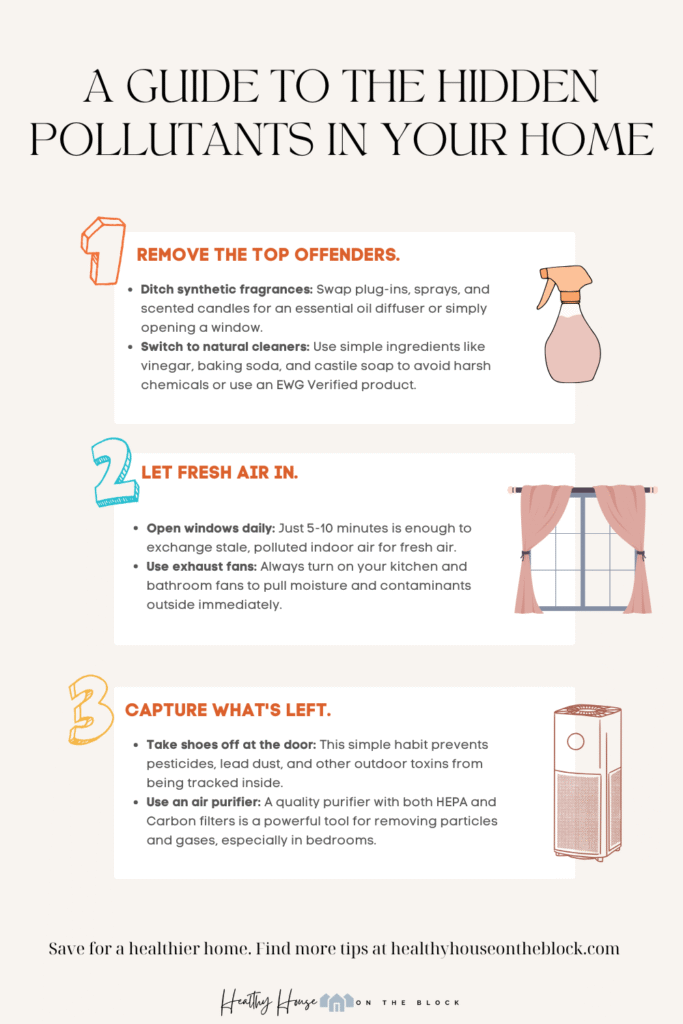
Your Next Steps: Creating Truly Healthy Air at Home
I don’t share all this to frighten you, but to empower you. Knowledge truly is power when it comes to creating a healthier home. And remember—you don’t have to make every change at once. Even small steps can significantly reduce your exposure over time.
Here’s a simple three-step approach I recommend to my clients:
- Eliminate what you can
- Remove synthetic fragrances from your home entirely
- Replace conventional cleaning products with natural alternatives
- Choose low-emission materials for any new purchases
- Never allow smoking inside or near your home
- Filter what you can’t eliminate
- Invest in quality air purifiers for bedrooms and main living areas
- Use a range hood that vents outside when cooking
- Consider upgrading your HVAC filters to MERV 13 or higher
- Add houseplants that help filter the air, like snake plants and peace lilies
- Ventilate consistently
- Open windows daily, even just for a few minutes
- Use bathroom and kitchen exhaust fans
- Consider a heat or energy recovery ventilator for whole-house air exchange
- Air out new purchases before bringing them inside
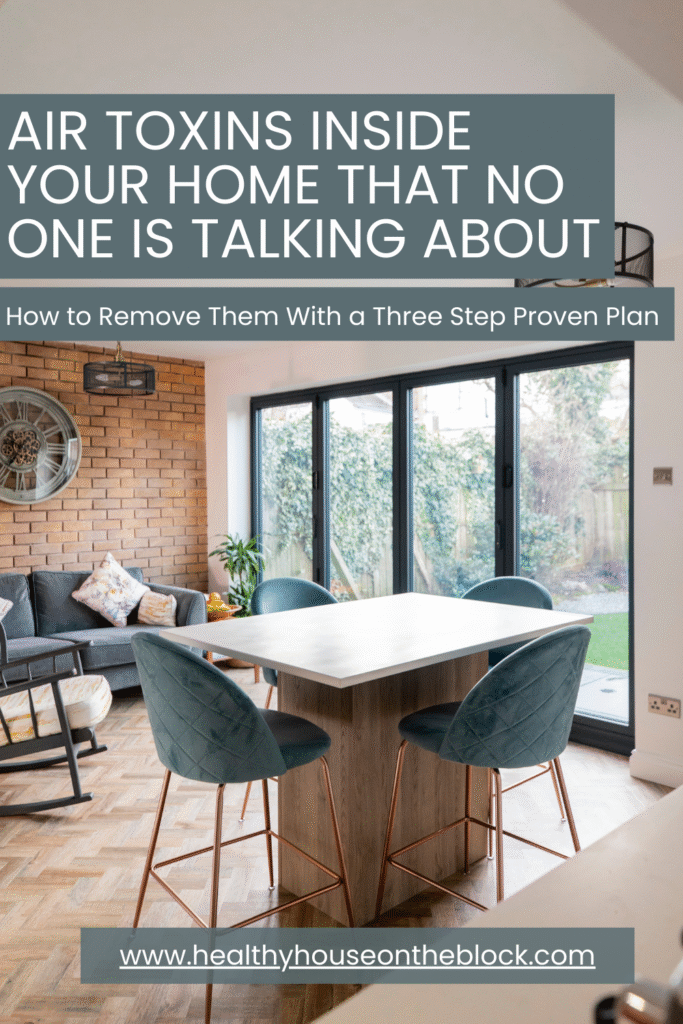
Remember, creating a truly healthy home is a journey, not a destination. Each small change you make builds toward a significantly healthier living environment. Your lungs, brain, and entire body will thank you—often in ways you might not expect, from better sleep to improved concentration and energy.
If you’d like personalized guidance on identifying and addressing the specific air quality concerns in your home, I offer comprehensive healthy home assessments that look at these pollutants and many other factors affecting your indoor environment.
What’s one change you could make this week to reduce your exposure to these airborne toxins? I’d love to hear about your healthy home journey in the comments below.
Breathing cleaner air starts with awareness—and now you have it.

Share this:
- Click to share on Facebook (Opens in new window) Facebook
- Click to share on LinkedIn (Opens in new window) LinkedIn
- Click to share on Reddit (Opens in new window) Reddit
- Click to share on Pinterest (Opens in new window) Pinterest
- Click to print (Opens in new window) Print
- Click to share on X (Opens in new window) X





